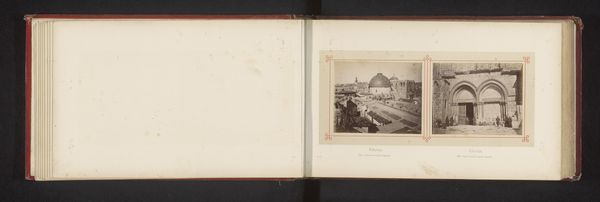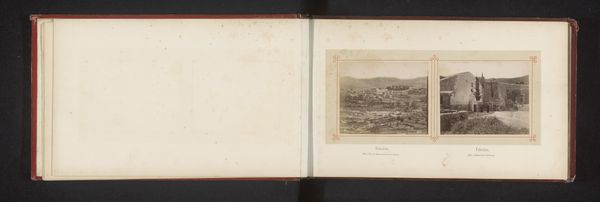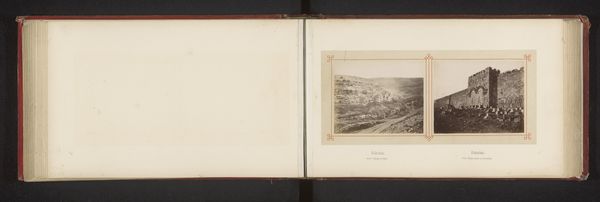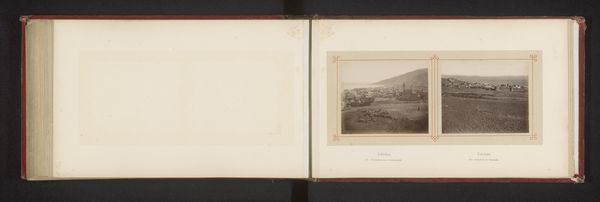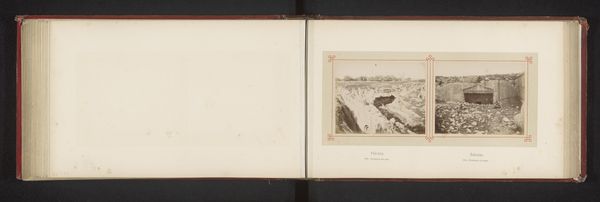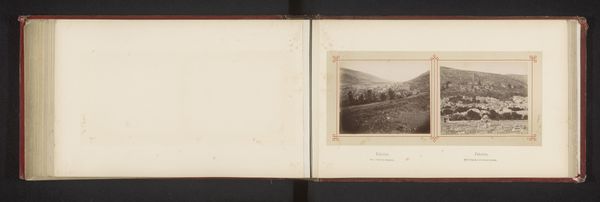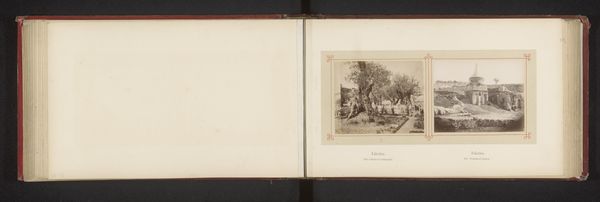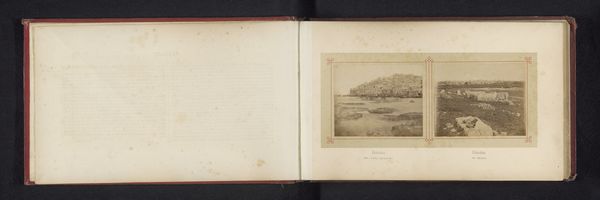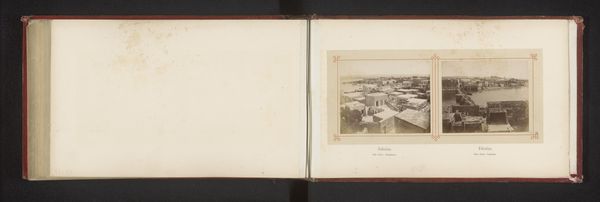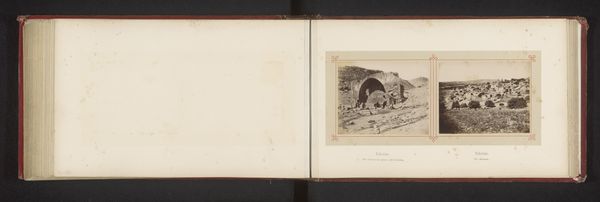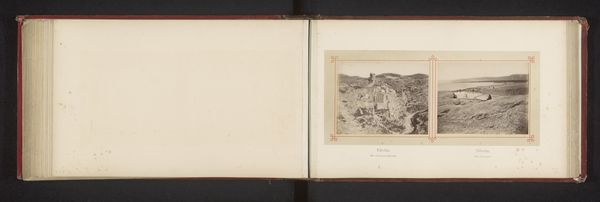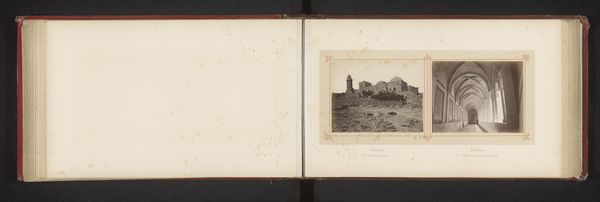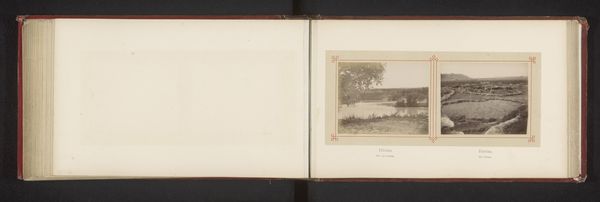
print, photography, albumen-print
landscape
photography
orientalism
albumen-print
Dimensions: height 77 mm, width 97 mm
Copyright: Rijks Museum: Open Domain
Editor: Here we have Félix Bonfils' "Gezicht op Jeruzalem," created before 1878. It's an albumen print within a larger album at the Rijksmuseum. Looking at the detail in the photographs, especially how they’re presented within the album itself, makes me curious. What do you see in this work, especially considering the material choices and presentation? Curator: This work begs to be seen through a materialist lens. The choice of an albumen print, a specific photographic process requiring skilled labor, and its placement within an album transforms the image. Consider the cost and exclusivity of such an object in the late 19th century. It shifts the viewing experience, framing Jerusalem for consumption by a particular audience. What social class do you think would have engaged with such material? Editor: Wealthy tourists, probably? The album format feels like a souvenir, a way to take a piece of the Orient home. Curator: Precisely. The albumen print was a commercial photographic technique, often used to create detailed landscapes and portraits. It was very popular but also very resource-intensive. How does the materiality of the albumen print—the paper, the egg whites used in its creation—affect the image's meaning in relation to the idea of documenting a place like Jerusalem? Editor: I guess it turns it into a commodity? The artistic process becomes another part of how the location is 'consumed' by a western audience, it's not just about seeing, but possessing a 'piece' through this kind of processed image. Curator: Exactly. It challenges the conventional boundaries between fine art and a produced object for popular consumption. Understanding the materiality forces us to reckon with how this landscape became both a symbol and a sellable commodity in the burgeoning tourist industry of the time. Editor: I never considered that. It’s fascinating to think about photography in terms of labor and material production, not just artistic representation. Thank you. Curator: Absolutely. Reflecting on materiality changes the nature of how we observe art. We move away from individual artistic genius toward a broader analysis of the culture producing these commodities.
Comments
No comments
Be the first to comment and join the conversation on the ultimate creative platform.
